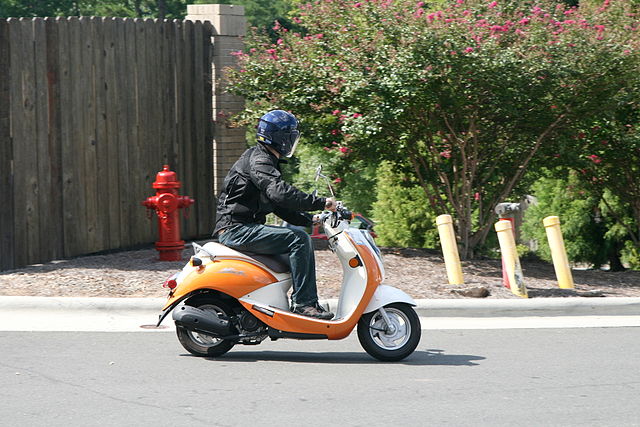According to the North Carolina Division of Motor Vehicles, state roads and highways saw 916 moped, motor scooter or motor bikes crashes during 2019. Nearly 85 percent of those wrecks left the rider injured. Sadly, 3.5 percent of the collisions involving mopeds ended in fatalities.
The numbers are likely to grow, as more Carolinians and tourists opt for affordable, convenient and—let’s admit—fun vehicles. Each time I visit the Outer Banks or Research Triangle, I see more moped riders. I also, by nature of having spent four decades advising and representing clients in personal injury and wrongful death cases, see potential victims of serious crashes caused by negligent and reckless drivers.
Why Drivers Hit Mopeds
North Carolina state law restricts mopeds to having engines no larger than 50 cubic centimeters. Additionally, no moped capable of exceeding 35 mph can be sold in the state. Despite these physical limitations, moped riders are permitted to operate on paved roads except interstates.
LEARN MORE
- How to Pursue a Personal injury Claim Following a Motorcycle Crash in North Carolina
- What You Should Know About Wrongful Death Claims in North Carolina
- A Virginia Personal Injury Attorney Discusses the Rights of Moped Riders
The performance disadvantages mopeds have compared to cars, trucks and even motorcycles are compounded by the fact that drivers simply have a hard time seeing the smaller vehicles. This phenomenon leads to rear-end collisions caused by drivers who incorrectly judge speed and distance, moped riders being forced off the road by drivers who fail to check their blind spot and left turn crashes caused by drivers who fail to yield right of way.
A moped manual published by Motor Vehicle Services of New Jersey further warns riders that “car doors opening may hit you or force you into traffic. Search and scan ahead for parking or parked cars. Look for people in cars, front wheels turning toward the street, and taillights.”
Crash Injuries to Moped Riders Tend to Be Severe
A review of medical records published in a 2019 issue of the Hawaii Journal of Health and Social Welfare revealed that “moped riders are at increased risk for significant head and facial injury.” This finding is somewhat intuitive because moped riders enjoy none of the protections that are built into passenger vehicles and commercial trucks.
Wearing a helmet will only do so much to prevent traumatic brain injuries. Protective clothing can never blunt impacts to the degree that door beams and crumble zones do. Of course, mopeds lack seat belts and air bags.
In many ways, getting hit on a moped is worse than being struck as a pedestrian. The speed and momentum of the moped is added to the speed and momentum of the car or truck, practically guaranteeing that the rider will be thrown through the air and land hard before skidding.
Spinal cord injuries, bone fractures and road rash are also common injuries for moped riders. Recovering from a crash can take months or years.
No matter how defensively and skillfully moped riders operate their vehicles, they must rely on the attention and responsibility of drivers to remain uninjured and alive. The consequences of not safely sharing the road are too high to continue accepting.
EJL